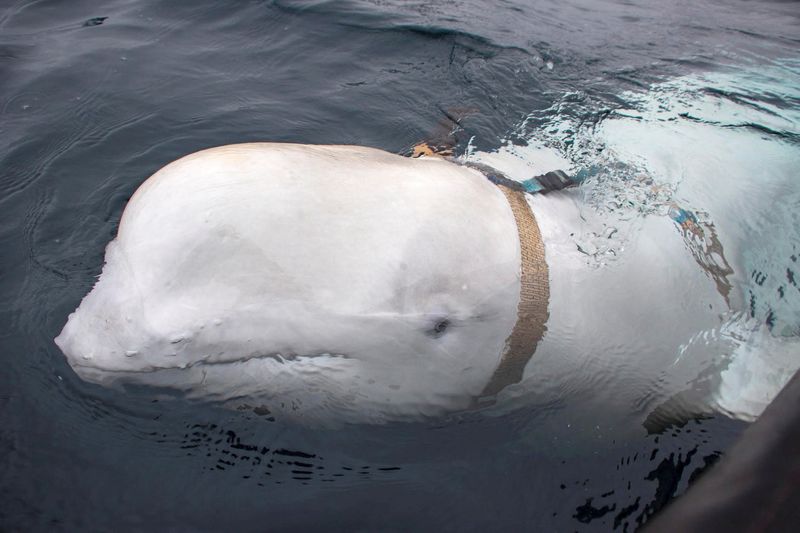The beluga whale discovered with a harness strapped around its neck in Norwegian waters five years ago and found dead on August 31 has been named Hvaldimir, a combination of the Norwegian word for whale and Russian President Vladimir Putin’s first name. The animal was discovered floating in the sea by a father and son fishing in southern Norway. The whale became a subject of media attention when it was found in 2019 wearing a harness with what appeared to be a mount for a small camera, leading to jokes that it was a Russian spy. However, Norwegian police have stated that Hvaldimir’s death was not related to human activity.
An autopsy revealed that a stick measuring 35 cm in length and 3 cm wide was stuck in the whale’s mouth, and its stomach was empty with most organs having broken down. Despite some injuries, the police found that they were superficial and not related to being shot. There is no evidence suggesting that Hvaldimir was shot and no indication that human activity led directly to its death. As a result, the police will not be conducting any further investigation into the beluga whale’s death. A full report on the autopsy findings will be ready in two weeks.
Norway and Russia share a maritime border in the Arctic, and the discovery of the beluga whale with a harness sparked speculation and jokes about Russian espionage. The animal rights groups that filed a complaint into the death of Hvaldimir had alleged that the whale had been shot dead, but the police investigation did not find any evidence to support this claim. While Hvaldimir had sustained some injuries, they were determined to be superficial and not the cause of death.
The beluga whale, Hvaldimir, has garnered public attention since it was first discovered with a harness in 2019 and has been followed closely by media outlets. The circumstances surrounding its death have been the subject of speculation, with various theories being put forth as to how the animal may have died. The police investigation into the death of the beluga whale has concluded that its death was not due to human activity, and no further investigation will be conducted.
The discovery of Hvaldimir’s body with a stick stuck in its mouth and its empty stomach has raised questions about the welfare of marine life in the region. The findings of the autopsy will shed more light on the circumstances surrounding the beluga whale’s death and may help to prevent similar incidents from occurring in the future. The case of Hvaldimir highlights the importance of protecting marine life and ensuring their well-being in the face of environmental challenges and human activities.
In conclusion, the beluga whale, Hvaldimir, found dead in Norwegian waters had a stick stuck in its mouth and its death was not related to human activity. The police investigation did not find evidence to support the claims that the whale had been shot. The circumstances surrounding Hvaldimir’s death have sparked public interest and concern, leading to calls for further protection of marine life in the region. The findings of the autopsy will provide more information on the cause of death and may help to prevent similar incidents in the future.


